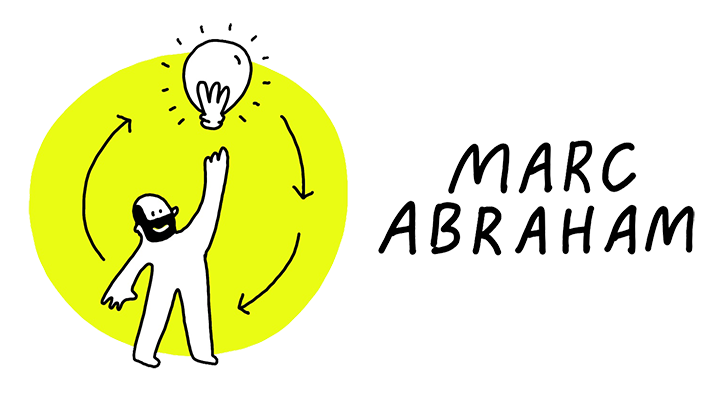Prioritisation. A lot of product managers will have a love-hate relationship with prioritisation; constantly having to choose between ideas and making tough tradeoff decisions. Whichever way you look at it, prioritisation is part and parcel of our job as product managers. Before you prioritise a specific solution, I’d always recommend you assess first whether the problem is worth solving in the first place.
A few weeks ago I wrote about identifying and validating problems. I’m now going to focus on assessing the opportunity related to solving a particular problem. Is the problem worthwhile solving? Why (not)? Has the problem already been solved? If so, by whom and how? I’ve learned that a simple opportunity assessment or business case can be very effective in helping to decide on whether to create a product.
What’s a product opportunity assessment? – A product opportunity statement is a simple template invented by Marty Cagan and is meant to help people concentrate on the ‘right’ opportunities. How do you know which opportunities to focus on and which ones to discard? How do you prioritise between ‘great sounding product idea A’ and ‘great sounding product idea B’? What are the grounds on which you base such a – typically difficult – decision? Marty Cagan’s product opportunity assessment helps us work through these thorny questions in a very systematic and structured manner:
- Exactly what problem will this solve? (value proposition)
- For whom do we solve that that problem? (target market)
- How big is the opportunity? (market size)
- What alternatives are out there? (competitive landscape)
- Why are we best suited to pursue this? (our differentiator)
- Why now? (market window)
- How will we get this product to market? (go-to-market strategy)
- How will we measure success/make money from this product? (metrics/revenue strategy)
- What factors are critical to success? (solution requirements)
- Given the above, what’s the recommendation? (go or no-go)
By Marty Cagan – Taken from: http://svpg.com/assessing-product-opportunities/
The thing I love about this approach is that it enables me to compare product opportunities or ideas in a very objective and like-for-like manner. Instead of going for the first solution to a problem that “sounds right” or “seems cool” you’re taking a step back and assessing a number of (competing) market or product opportunities, using the same questions or metrics to do an objective comparison. I’ve found that going through the process of assessing a product opportunity makes it so much easier to have really focused conversations about product strategy or goals that you are looking to deliver on.
What a product opportunity assessment isn’t – An opportunity assessment doesn’t aim to provide a solution to a business or customer problem. In contrast, it helps answering the question whether it’s worthwhile solving the problem in the first place. Another way to look at this is to look at the value or outcome that you’re looking to provide to your business or customer.
When to do a product opportunity assessment? – Too often, I see business people or product managers jumping straight into what I call “feature mode”: coming up with a feature or a solution instead of first looking at the problem to solve (and whether it’s worth solving) or the specific business or customer outcome to achieve. I’ve learned a lot from Valve, a well known gaming company, and from American based innovation expert and author Tony Ulwick in this respect. Both Valve and Ulwick focus on outcomes instead of outputs. It’s not about creating feature X. It’s about the value that this or any feature generates for the customer and the business. Similar to creating a business case, a product opportunity assessment helps you and your stakeholders understand why a problem is worth solving (or why not) and the value that solving it will generate.
I recently came across another useful framework by my friends at Xing, a business networking platform aimed at German speaking users. This framework is called “ACE” and stands for “Assignment Clarification Exercise” (see below). Similar to Marty Cagan’s product opportunity assessment template, Xing’s framework urges you to think about aspects such as “context” and “outcome.”

Main learning point: Especially in situations where you’ve got a lot of opportunities to choose from, assessing the opportunity using Marty Cagan’s questions helps you to compare opportunities or ideas objectively. Whether you create a full fledged business case or use Cagan’s template, the key thing is that you assess the problem you’re thinking of solving, the competition, your target audience, etc. You’re thus assessing the ‘context’ around a problem, understanding whether it’s a problem worth solving or prioritising.
Related links for further learning:
- http://produktfuehrung.de/framework-no-9-auftragsklarung/
- http://svpg.com/assessing-product-opportunities/
- http://www.stephenbungay.com/Books.ink
- https://en.wikipedia.org/wiki/Outcome-Driven_Innovation
- https://hbr.org/2002/01/turn-customer-input-into-innovation
- http://www.valvesoftware.com/company/Valve_Handbook_LowRes.pdf


3 responses to “My Product Management Toolkit (6): Assessing Product Opportunities”
[…] Are a product vision and roadmap in place that drive the roadmap? How do people assess new product opportunities? One the first things I’d like to do is to understand about any product or project milestones […]
[…] in with our current offering of products and services? Why (not)? It’s similar to when you assess a product opportunity and go through a number of questions to look at the viability of a trend for your business (see […]
[…] my toolkit blog post no. 6 I wrote about Marty Cagan’s opportunity assessment, and how you can compare product […]